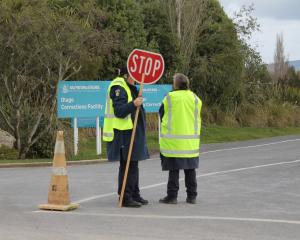
So it made perfect sense to hold a function in its honour in a cold, dark place - underground in the Athenaeum in the Octagon with a craft beer named after it on hand and conservation educator Tahu Mackenzie dressed as a peripatus.
The occasion was the launch of the booklet New Zealand peripatus which outlines the available knowledge of the invertebrate, its conservation and future research needs.
It was the culmination of a project which started when it was agreed the Caversham Valley population of worms needed to be moved due to the state highway improvements. The New Zealand Transport Agency had them moved to an area nearby.
The NZTA also provided funds to the Department of Conservation to produce the booklet.
A working group was set up with representatives from Ngai Tahu, Forest and Bird, the Dunedin City Council and landowners to help create the booklet.
Dunedin photographer Rod Morris provided the photographs, while nearby resident Dave Randle provided his experience and knowledge of the species.
Prof Sir Alan Mark, who wrote the foreword, told those at the launch the booklet was a very important milestone for Doc and for Dunedin city.
It was well published, well presented and very informative and would have wide appeal.
Both he and NZTA project manager Simon Underwood made special mention of Mr Randle, whom they described as ‘‘champion of the cause'' for his efforts to have the worms protected.
Mr Underwood said finding the peripatus was initially ‘‘one of those little surprises you wish you didn't have'' in a roading project, but he quickly came to see the opportunity for ecological gain it presented.
NZTA would also publish a monitoring report at the end of the roading project updating how the worms were faring in their new habitat.











